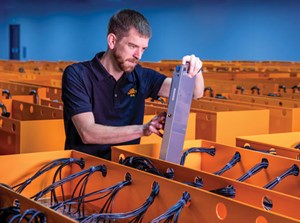What’s new in Exploration
What a year! Facts never overcome emotion, science never supersedes politics, and politics often gets stupid (e.g., Denmark). If E=MC2, all energy is good.
Facts: The textile fast-fashion industry accounts for more greenhouse-gas emissions than all international flights and maritime shipping combined (Bloomberg, Jan. 15, 2018).
Science: Plate subduction of Cretaceous biomatter “cooked” much of the mobile hydrocarbons filling our reservoirs. Plate tectonics also play a major role in global warming. “One of the enigmas of past climate is the event known as the Miocene Climatic Optimum (MCO), a period of global warming from about 17 million to 15 million years ago. The MCO was the most significant interruption of a long-term planetary cooling trend that has stretched from around 40 million years ago up to modern (pre-industrial) times. Yet researchers have found scant evidence of high carbon dioxide (CO2) levels during the Miocene, leading to speculation as to what may have driven the temperature shift.” (“Increased plate tectonic activity may have warmed the Miocene climate,” EOS, American Geophysical Union, Dec. 1, 2020).
Politics: The year, 2020, shows dependency on gov-controlled tech for food, water, toilet paper and jobs. You and your children are prisoners to Zoom, Handshake, Skype, etc. Government Covid-19 restrictions on in-person communication crashed transportation energy, while it renewed excitement among green-new-deal provocateurs. “Personal interaction spurs creativity,” (Edward Glaeser, Harvard Professor, virtual presentation to North Dakota State University, Dec. 3, 2020). Should it surprise us that globalists focus on stopping creativity within the O&G industry? O&G firms have spent billions over a century on understanding how to remove fluids from rock. Hydrocarbonists should be the most capable of putting fluids into rock, i.e. CO2. Will green Faust pay their devil to grant a wish?
“Should we expect democratic governments to provide the socially optimal level of transportation infrastructure, or will the democratic process lead to either over- or under-investment? Like all public actions, transportation decisions will be shaped not only by voter preferences, but also by voter attention,” (The political economy of transportation investment,” Glaser, Ponsetto, 2017.) Liberal Harvard U calls it.
Alive: ExxonMobil CEO Darren Woods, “Continued emphasis on high-grading the asset base—through exploration, divestment and prioritization of advantaged development opportunities—will improve earnings power and cash generation...” Exxon still plans to lay off thousands (Editor’s note: approximately 14,000 through 2022, relative to the 2019 headcount.). “Joblessness is misery,” (Glaser, ibid.) Now down about 70% from 2010’s level, is exploration 2050 the new misery?
Better: Professional societies have improved virtual learning, becoming more than society ego. SPWLA is among the best, offering quality web sessions.
About on Time: In November, Woodside successfully executed a million-vCPU scale computing workload across three AWS regions (cloud-Amazon Web Services) in the United States. The vCPUs performed full-waveform inversion on 3,200 km2 of 3D seismic data from the Greater Sunrise gas resource, located offshore Timor-Leste. The extra capacity provided by the AWS infrastructure allowed analyses to run in parallel, an approach that delivered results in less than two hours, compared with the industry-standard weeks (World Oil, Dec 3, 2020).
Virtual computing has been around since wires could talk. First by militaries, T.I., universities, IBM, and NSA types on computers “in-house,” then NASA with Internet-connected volunteers. Commercial agents legally “compute” with your PC/phone (if left on). In 2002, I caught a source in Indonesia accessing our Houston mainframe for “free” virtual computing. Computing via a cloud has the advantage of being fast while not owning thousands of CPUs and linking millions of dollars of serial buses in-house. vCPU still means compute cycles must be available, but it does not mean your data are secure. DUG McCloud (Fig. 1) is, in my opinion, today’s most massive computing cloud for seismic and least risky for hacking.
Mathematical parallel processing, or breaking problems into manageable simultaneous steps, was “invented” in 1620 with logarithms. It was adapted to analog slide-rules (1859) and brass machines (Enigma, 1932), then morphed into building-sized tube computers in 1945 (ENIAC). Computers connected massive analog data using Octal (1950s). Transistors coded with interfaces such as Fortran (1957) made it possible for finite difference approximations of complex “parallel” math, such as (1870) differential equations. Silicon chip integrated circuits facilitated serial-chained micro-processors or CPUs. Parallel or Quad use has been common with PCs since the P5 chip was first slaved. Parallel today means calculations are divided and sent out to various CPUs. No one CPU has a complete picture. The independently computed picture pieces are reassembled in a “pipe” during final output. No need to hack the cloud. Recall agreeing to a computer license or to “cookies” on your end of the pipe?




